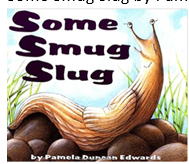 |
2. The
Rough-Faced Girl by Rafe Martin and David Shannon
This is an adaptation of the classic story of
Cinderella.
|
 |
3. Shakespeare
Classis for Kids by Mary Lamb and Charles Lamb
Shakespeare's best tales are reduced to a simple
level and retold in a more modern style that children can easily read and
understand.
|
 |
4. A
Light in the Attic by Shel Silverstein
Collection
of poems to provide examples of alliteration. https://www.amazon.com/Light-Attic-Shel-Silverstein/dp/0060256737
|
 |
5. Some
Smug Slug by Pamela Duncan Edwards
This book tells a cautionary tale about a slug who
must climb a slippery slope, despite the animals who are trying to stop him.
|
 |
7. Walt
Disney’s Cinderella by RH Disney and Don Dias
The
classic Disney story of Cinderella.
|





You've got some good book choices and good resources too! I could have used that Reading Comprehension guide to help with my lessons!
ReplyDeleteYou have a wide variety of books. I have a fairy tale math trade book by Scholstics that I would use during my unit to continue the theme to other subjects.
ReplyDeleteI continue to enjoy the Click Clack Moo books. But nowadays they remind me George Orwell's "Animal Farm" (which teaches some serious realistic lessons ), but I still like them because of the humor (always necessary in a classroom).
ReplyDeleteLove your variety of books! What grade level is your unit for? I would especially be interested in reading "The One And Only Ivan." :)
ReplyDeleteTargeted for 3rd grade.
DeleteYou rocked it! This is a fantastic resource.
ReplyDelete